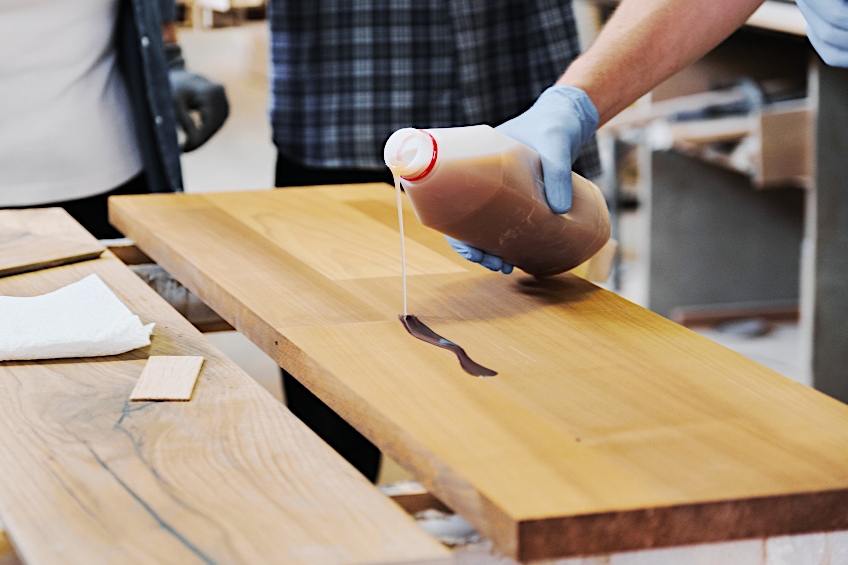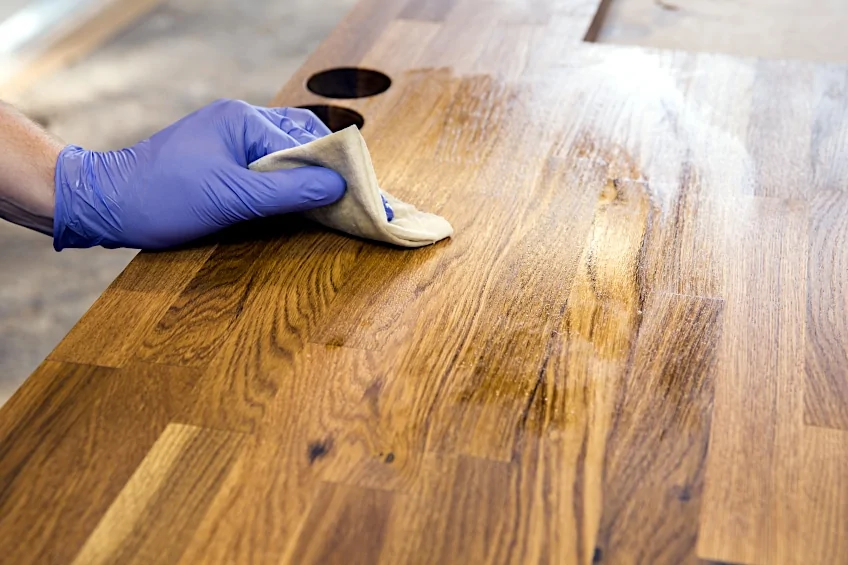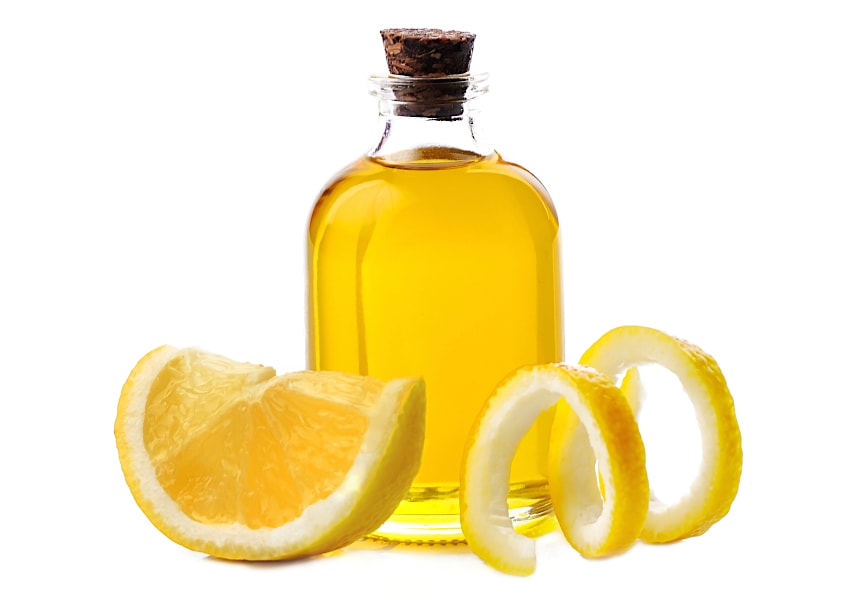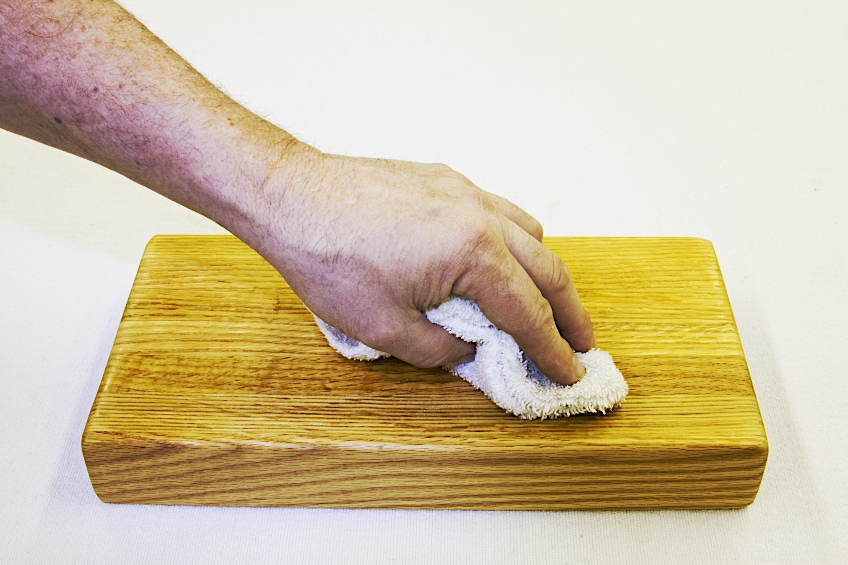Tung Oil vs. Linseed Oil – The Best Sealer for Your Woodwork
This post may contain affiliate links. We may earn a small commission from purchases made through them, at no additional cost to you. You help to support resin-expert.com
We have all made significant adjustments to the way we exist, the items we purchase, and what we do with our everyday waste as a result of our understanding of our impact on the ecosystem. This revelation has transformed society and how we see our daily lives, right down to the smallest elements. This has had an impact on everything from polymers and resins to the sorts of glue and wood solutions we use in the crafts business. The demand for all-natural wood solutions such as linseed or Tung oil has increased dramatically in recent years. Many DIY hobbyists and professional artisans have switched from harmful chemicals to non-toxic solutions for sealing and treating woodwork, but what are they? Let us take a look at what these products are and how they compare to one another. More specifically, we’ll take a look at Tung oil vs. Linseed oil.
Table of Contents
What Is Tung Oil?
What exactly is Tung oil? It is one of the most coveted wood treatments on the market. This oil is made from the sap of the Tung tree, which grows mostly in China and its neighboring areas. This oil is firmly ingrained in the area’s carpentry and general crafts tradition, having been used for many years to make a water-resistant covering for furniture, yachts, statues, and many other surfaces. We don’t judge you if you’re questioning why this specific oil has such a massive following. This oil is one of the most flexible and efficient wood treatments on the marketplace, enabling you to safeguard your woodwork while also improving its visual quality with a single solution.
One may contend that varnishes and other man-made compounds enable you to achieve the same objective. However, the distinction between Tung oil and competing products is that you get all of the advantages of preserving and enhancing your workmanship without the disadvantage of exposing hazardous substances to your work and, more significantly, yourself.
Tung oil is completely organic and has no negative effects on your work, your wellbeing, or the ecosystem! Tung oil is relatively simple to find, and you may have even seen it on the shelves of your local lumberyard or hobby shop, but not all varieties of the wood treating oil are made equal. Tung oil is available in two varieties: one with an artificial drying ingredient and one without. Tung oil solutions including a drying agent, as the name indicates, dry quicker, but the compounds used to attain the rapid drying pace can be detrimental to you and the planet.
Pure Tung oil is more difficult to find and may be more costly than conventional wood treatments, including the drying chemical. However, more firms are electing to use more ecologically friendly drying chemicals or just avoid using these compounds in their goods altogether.
The appeal of Tung oil is attributable to various of factors. Tung oil is among the most adaptable solutions available for sealing and safeguarding a broad range of surfaces, which together gain from its capacity to insulate them from external pressures, as well as making them foodstuff safe, watertight, and resistant to mildew and insect infection. How can Tung oil accomplish this? Well. It functions similarly to varnishes in that it penetrates beneath the workpiece surface and bonds with the wood fibers, forming the earlier mentioned protective coating.
What Exactly Is Linseed Oil?
Linseed oil is produced from the seeds of the flax plant, which is pressed and crushed to obtain a fragrant, rich oil. Linseed oil is very fascinating since when it cures, it crystallizes into material that looks like hexagons. It also functions as an organic drying product. Drying treatments are utilized to decrease the water content of a given material to zero, allowing surfaces (or the material itself) to dry fast following application to a particular surface.
While linseed is commonly applied by itself in the woodwork and crafts industries, it may also be combined with other chemicals to impart their own qualities or to impart extra characteristics to the linseed oil as required.
Have we said that linseed oil is also edible? Although it is not widely consumed around the world, linseed oil is mostly enjoyed in eastern European countries, where it is taken with Quark, which is simply aged cheese that is covered in flax oil and served as a specialty. Linseed oil, when used in its “flax oil” form, may be used as a cooking oil that is completely safe to consume, and it is also an excellent provider of Omega three (although only a little amount), thus it’s beneficial for you! Linseed oil has several uses in a variety of sectors. Linseed oil, for instance, is occasionally used as a binder material in the production of paints to chemically bond numerous constituents of a specific paint solution together to create a unified, multipurpose product.
Despite its use in the woodworking business, it is not a particularly protective sealer for wooden pieces, since things like liquid-vapor flow straight through it with remarkable ease. Another disadvantage of this oil is that it is readily damaged and destroyed. However, it is very easy to apply, making upkeep very simple in the long term, and as an edible oil is perfectly safe to use on wooden food preparation and serving utensils. Notwithstanding its limitations, linseed oil produces an exceptionally stunning finishing on wood.
Linseed oil provides a deeply permeating treatment that gives wood a glossy, strong finish that is easily identified, even from a distance.
Tung Oil vs. Linseed Oil: What Is the Difference?
There are several aspects to consider while deciding between Tung oil and linseed oil. There is a difference between linseed oil and Tung oil and while both oils are incredibly flexible and successful when used as wood treatment, they do have restrictions and downsides. Let’s examine how these two oils compare to one another.
| Linseed Oil | Tung Oil | |
| Characteristics | Makes wooden surfaces go orange over time | Enhance the richness of the wood hue while reducing the general surface appearance |
| Color impact | Enhances the natural color of wood | Enhances the grain of the wood |
| Water-resistance | Intrinsically resistant to water | Water-repellent due to densely compacted chemical bonds |
| Infestation resistance | Insects are generally repelled by boiled linseed oil | Tung oils are naturally resistant to water and insects |
| Pricing | Not expensive | Not expensive |
| Accessibility | Easily available | Commonly available |
| Finish quality | The finish is of a very high standard and damage resistant | Impact and abrasion resistant and great quality finish |
| How versatile is it? | Can work well on most wooden surfaces | Works well on wood as well as stone |
The Advantages and Disadvantages of Linseed Oil vs. Tung Oil
Now that we’ve established the fundamental difference between linseed oil and Tung oil, let us now have a glance at some of the advantages and disadvantages of each. You may discover that one performs better than the other for some tasks, so be sure to select one that meets your specific requirements, as the uses for both oils are quite subjective.
The Advantages and Disadvantages of Linseed Oil
Linseed oil has a huge fan following that transcends whole nations while being one of the most widely used oils on the planet for decades. But what is it about this oil that makes it so popular? Let us now have a glance at some of its advantages and disadvantages so you can decide for yourself.
- Enhances the organic grain of wood
- Highlights the texture of wood
- Non-toxic and food-safe
- The oil penetrates deeply
- Moisture protection for wood
- It may be combined with various finishes
- It must be reapplied on a regular basis
- Surfaces are more vulnerable to contact or abrasive damage
- Surface abrasion might be difficult to restore compared to other coatings
- If wooden surfaces are not properly maintained, they might turn yellow
- Sudden temperature fluctuations can cause wet wood to release excessive oil
- If not applied on a regular basis, it may not prevent incidental discoloration
The Advantages and Disadvantages of Tung Oil
Lung oil has been utilized for centuries in the east (no embellishment). The tradition of putting tung oil on angling boats and sporting equipment has been handed down through generations in many eastern areas, so let’s see what all the commotion is about and examine a few of the positives and downsides of this oil.
- Tung oil is not toxic
- Tung oil is not harmful to one’s health
- Easily applied with a brush or cloth
- Easy to source
- When applied to workpieces, it is simple to reapply and maintain
- Water and atmospheric moisture resistance (more so than linseed oil)
- It is suitable for use on wood and stone surfaces
- While water-resistant, it is not entirely waterproof
- Impacts can scrape or harm the surface (although not as much as linseed oil)
- More costly than linseed oil
- May require more than one application (more significantly than linseed oil)
The Proper Application of Linseed or Tung Oil
You ought to have a decent sense of which wood treating oil is ideal for you at this stage in the linseed oil vs Tung oil discussion. Many would-be craftsmen lack expertise on how to apply these wood solutions, therefore we’ve chosen to provide you with a quick lesson on how to apply these oils efficiently. Note that independent of your choice to use linseed or Tung oil, the quality of your surface is determined by how well you distribute the oil to your item. Linseed and Tung oil have lately gained popularity. If you want to utilize some on your current project but don’t want to wait through a half-hour YouTube tutorial riddled with advertising, here’s a quick step-by-step instruction for you to follow. (However, we have provided some instructional videos at the end of this article if you really do want to learn more.)
Surface Preparation
You must first clean the surface of your product for the wood cure, whether you use linseed or Tung oil. Linseed oil performs best when applied to a surface that has been cleaned using fine-grit paper, preferably 120 grit or even finer, to ensure that the wood fibers are flat and won’t catch on your fabric or brushes. Take as long as you need while preparing wood for oil. Make absolutely sure the surface is not just oil-friendly, but also equally distributed. Clean your piece of any stray dirt or wood fragments before moving on to the next step in the method.
Optional Dilution of the Linseed or Tung Oil
The first time you use linseed or Tung oil, it might be rather thick. However, many professional craftsmen and Hobbyists have discovered that diluting one or both oils with the citrus solution can help with distribution. Citrus solvents act by altering the viscosity of the oil, making it simpler to permeate the workpiece surface. This means you won’t have to waste as much time wiping up blotched regions once it’s been worked in.
What’s the best way to combine citrus solvents with natural oils? Merely pour a little linseed or Tung oil into a receptacle and gradually add the citrus solution until the required viscosity is achieved.
Application of First Coating
Now comes the fun section: getting your hands filthy. When administering these oils, you have two options: a brush or a towel. Each implement has its own set of pros and drawbacks; for example, using a brush allows you to administer your coat quicker and more uniformly, whereas using a towel allows you to massage the oil in while administering it but at the expense of pace and consistency. Simply select which one best fits you and get started.
Using a brush is straightforward; simply start at one end of your project and make your way to another, however, if you prefer to use a towel, begin from the middle of the piece and make your way outwards toward the borders. You may either drip the linseed oil straight onto the object or use a towel or paintbrush to distribute it. This will not have a significant impact on the total completion, but it may make things simpler for you.
Allow Absorption Time
Well done! You’ve completed your debut organic wood processing on your item, but even though the most difficult portion is complete, you still need to ensure that your finish looks excellent. How do you go about doing this? Wait for 15 to around 20 minutes for the linseed or Tung oil to seep into the wood at ambient temperature. Then, using a towel, wipe away any surplus oil that hasn’t been soaked into the wood’s surface. When administered to a wooden surface in excess, linseed oil, in particular, can become exceedingly sticky.
Leave it to rest for the product’s specified time period until you’re confident you’ve removed all of the extra oil. If you’re not happy with the color right now, softly sand the surface with sandpaper and continue the procedure until you’ve reached your preferred shade. Remember that Tung oil requires more applications than linseed, so don’t be disheartened if your initial coat isn’t quite what you expected.
It’s now time to put your acquired expertise to the test. Since now you understand the difference between linseed oil and Tung oil, what they appear like when contrasted side by side, what the merits and downsides of each oil are, and how to apply them efficiently, it’s important to get out there and give it a shot. Note that these oils are available in a variety of forms, so be sure you’re working with a wholly natural oil, rather than one with additives.
Frequently Asked Questions?
How Does One Define the Difference Between Linseed Oil and Tung Oil?
Although these two oils have comparable applications, there are a few important distinctions between them. Tung oil requires more coats and is inherently moisture and pest repellent, while boiled linseed oil is only waterproof and bug repellent once it has been heated. Both oils are quite adaptable; Tung oil may be used on stone, while pure linseed oil can safely be ingested.
How Does Linseed Oil on Cedar Work?
Linseed oil works very well on cedar wood. Most expert craftsmen prefer rubbing linseed oil into the wood by hand rather than using a brush, as this aids absorption into the wood fibers more efficiently, resulting in a bright sheen without harming the grain.
Are There Any Decent Tung Oil Alternatives Available?
Perhaps you are searching for Tung oil alternatives? Linseed oil is the most frequent Tung oil substitute. Linseed oil is a wood treating oil that is obtained from flaxseed. This oil has a superb finish but does not require as many applications as Tung oil.
What Are Some of the Advantages of Using Linseed Oil?
Insects are generally repelled by boiled linseed oil. It enhances the organic grain of wood, and highlights the texture of the material. Linseed oil is also non-toxic and food-safe. The oil of Linseed penetrates deeply and offers great moisture protection for wood surfaces. It may also safely be combined with various other finishes that are available on the market.
What Exactly Is Linseed Oil?
Woodworkers and crafters agree that linseed is a great multi-purpose product. Linseed oil is obtained from the flax plant. The oil is generated from the seeds of the plant, which may be squeezed and crushed to obtain the fragrant, rich linseed oil that they organically generate.














